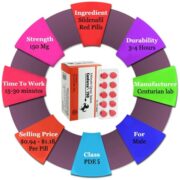
Introduction:
Software testing is an integral part of the software development lifecycle, ensuring the delivery of high-quality, reliable, and efficient software products. As technology advances and software complexity grows, mastering various testing techniques becomes crucial for software professionals. In this comprehensive guide, we will delve into the key aspects of mastering software testing techniques, covering a range of methodologies, tools, and best practices.
I. Understanding the Basics of Software Testing:
Importance of Software Testing:
Software testing is more than just finding bugs. It ensures that the software meets user requirements, functions as intended, and provides a positive user experience. By identifying and fixing defects early in the development process, software testing contributes to cost reduction and overall project success.
Fundamental Testing Concepts:
Before delving into specific techniques, it’s essential to understand basic testing concepts such as test cases, test plans, test scenarios, and test scripts. These form the foundation for any testing process and aid in effective test design.
II. Types of Software Testing Techniques:
Manual Testing:
Manual testing involves human intervention to execute test cases without the use of automation tools. Understanding when to employ manual testing and how to design comprehensive test cases is crucial for mastering this fundamental technique.
Automated Testing:
An essential component of contemporary software development is automation testing. Mastering tools like Selenium, JUnit, and TestNG is essential for creating robust automated test suites. This section will cover the advantages, challenges, and best practices associated with automated testing.
Unit Testing:
Unit testing is the process of testing separate features or parts of a software program separately. We’ll explore the importance of unit testing, techniques for writing effective unit tests, and tools like JUnit and NUnit.
Integration Testing:
As components are combined, integration testing ensures that they work together seamlessly. This section will cover various integration testing strategies, such as top-down, bottom-up, and sandwich testing, along with tools like Apache JMeter.
System Testing:
System testing evaluates the entire system’s functionality and performance. Mastering this technique involves designing comprehensive test scenarios, understanding system dependencies, and conducting thorough testing to ensure the software meets all requirements.
Acceptance Testing:
Acceptance testing verifies whether the software meets the specified business requirements. We’ll explore various acceptance testing methods, including user acceptance testing (UAT) and alpha/beta testing, and how they contribute to the overall software quality.
III. Advanced Testing Techniques:
Performance Testing:
Performance testing evaluates the software’s scalability, stability, and responsiveness in a variety of scenarios. This section will cover load testing, stress testing, and capacity testing, along with tools like Apache JMeter and LoadRunner.
Security Testing:
In an era of increasing cyber threats, mastering security testing is essential. We’ll discuss techniques such as penetration testing, vulnerability scanning, and security code reviews to identify and address potential security risks.
Usability Testing:
Usability testing ensures that the software is user-friendly and meets the end-users’ expectations. Techniques for conducting effective usability tests and tools like UserTesting.com will be explored in this section.
IV. Best Practices and Strategies:
Test Planning and Design:
Developing a comprehensive test plan and designing effective test cases are critical for successful software testing. This section will guide you through the process of test planning, requirement analysis, and creating reusable test cases.
Continuous Integration and Continuous Testing:
Integrating testing into the continuous integration (CI) and continuous delivery (CD) pipelines is essential for agile development. Learn how to implement effective CI/CD strategies and automate testing processes for faster and more reliable releases.
Test Data Management:
Managing test data is often overlooked but is crucial for successful testing. Understand the importance of creating realistic test data and implementing effective test data management strategies.
Defect Life Cycle:
Mastering the defect life cycle involves not only identifying bugs but also managing them effectively. Learn about defect tracking, reporting, and resolution to ensure a smooth development process.
Conclusion:
In conclusion, mastering software testing techniques is a continuous journey that requires a combination of theoretical knowledge and practical experience. By understanding the fundamentals, exploring different testing types, and incorporating advanced techniques, software professionals, including those undergoing a Software Testing Course in Mumbai, Thane, Navi Mumbai, Vadodara, Agra, Delhi, Noida & all cities in India. Can contribute significantly to the creation of robust, high-quality software products. Embracing best practices, staying updated on industry trends, and continuously refining testing skills will empower professionals to excel in the dynamic field of software testing, ensuring their success in both theory and practical application, whether they are in Mumbai or any other location.
Read More: Data Analytics: Unlocking Business Potential










